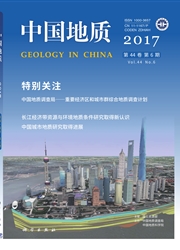

 中文摘要:
中文摘要:
在相同的物理化学(常温、常压、氧化)环境中,用大气降水分别对两块相似的硫化物矿石样品进行蒸发或淋漓实验,模拟干旱地区和潮湿地区的岩矿石风化作用。实验共进行603d。实验结果显示:经蒸发实验的样品无论是硬度、颜色和矿物组成等都发生了明显的变化,而经淋漓实验的样品无论硬度、颜色和矿物成分等基本保持实验前的特征;作蒸发实验浸泡液的pH值先降后升,最后稳定在6.5~7,而作淋漓实验淋漓液的pH先降,然后稳定于5左右,浸泡液的阳离子浓度却比淋漓液的高。实验结果表明蒸发作用比淋漓作用更容易使岩矿石风化。蒸发作用主要是化学反应。所以,这一实验结果向干旱地区主要是物理风化的传统认识提出了的挑战。
 英文摘要:
英文摘要:
Evaporation and leaching experiments were performed on two specimens of similar sulfide ores by using meteoric water in the same physico-chemical (normal temperature and pressure and oxidizing) environment to simulate weathering of rocks and ores in arid areas and humid areas. It took 603 days for the experiments. The experimental results show the following: appreciable changes took place in hardness, color and mineral composition of the specimen for the evaporation experiment, while the specimen for the leaching experiment in the main kept the features before the experiments in respect to the hardness, color and mineral composition. The pH values of the soaking liquid for the evaporation experiment first decreased, then increased and finally remained constant at 6.5-7; whereas the pH values of the leaching liquid for the leaching experiment first decreased and then was constant at -5. However, cation concentrations in the soaking liquid were higher than those in the leaching liquid. The experimental results indicate that evaporation causes rock and ore weathering more easily than leaching. Evaporation is mainly a chemical reaction. So the experimental results are a stem challenge to the traditional idea that physical weathering predominates in arid areas.
 同期刊论文项目
同期刊论文项目
 同项目期刊论文
同项目期刊论文
 期刊信息
期刊信息
